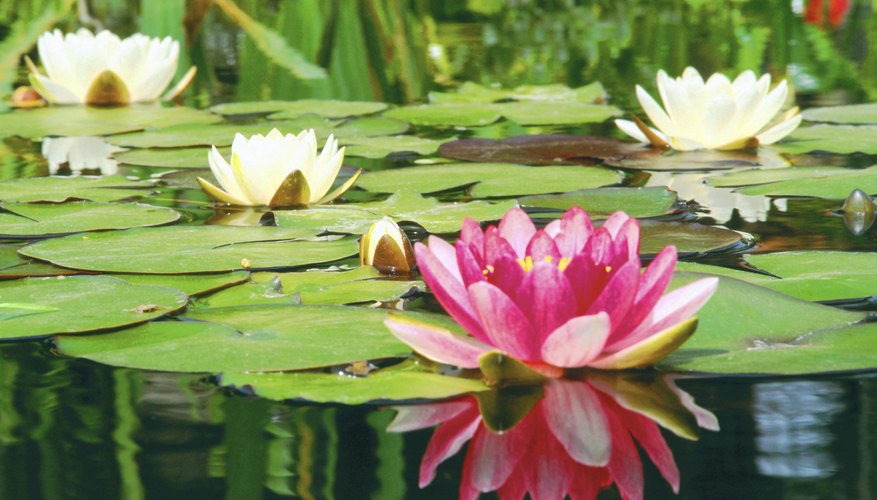Fish bowls make appalling homes for fish, but they can be repurposed as lovely terrariums and plant-only aquariums. If you have a large old fish bowl hanging around, using it to grow a single floating lotus creates a striking feature for a simply decorated home. A lotus bowl makes a modern, long-lasting alternative to a vase of flowers, with extra green points for recycling.
- Fish bowls make appalling homes for fish, but they can be repurposed as lovely terrariums and plant-only aquariums.
- A lotus bowl makes a modern, long-lasting alternative to a vase of flowers, with extra green points for recycling.
Place the bowl on a windowsill that receives plenty of sunlight each day. Do your preparation once the bowl is in situ -- it is going to be heavy once it is full of compost and water.
Pack the bowl with peat-free potting compost to about 15 to 25 centimetres below the rim.
Position the tuber horizontally on top of the compost, taking great care not to bruise or scratch it. Lotus tubers are extremely delicate.
Add distilled or rainwater to the bowl until the water surface is above the tuber and a few centimetres below the rim of the bowl.
Add a small amount of organic houseplant fertiliser to the water as per the instructions. As a rough guide, use about as much as the label recommends for a pot of the same volume as the bowl.
Top up the water level as required with distilled water.
TIP
You can use tap water for the initial set-up, in which case leave the water for 24 hours in a bucket beforehand to allow it to dechlorinate. This won’t remove minerals, however, which will accumulate in the bowl if you use tap water for topping up -- it is better to use distilled for this purpose.
Select a dwarf variety of lotus for container growing. Even then, you’ll need a pretty large fish bowl --ideally about a metre in diameter at the bulge. If you only have a small bowl, try growing a smaller floating plant, such as one of the many species of water lily, for a similar but more compact effect. Many of these plants are also easier to grow if you are inexperienced. An aquarium supplier might have a better selection than a garden centre.
Preparation is best done in early spring, while lotus tubers are dormant. They don’t take well to being moved once they start growing.
WARNING
The space in the bowl between the top of the soil and the water surface will develop algae, both free floating and attached to the side of the glass. This is normal -- the ideal conditions for a lotus are also ideal for algae -- and there isn’t much you can do about it. If you don’t like this natural, pond-like look, try painting the inside of the bowl with a waterproof pond paint or coating prior to preparation.
